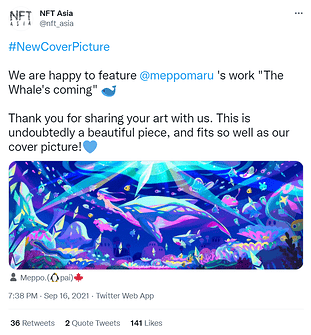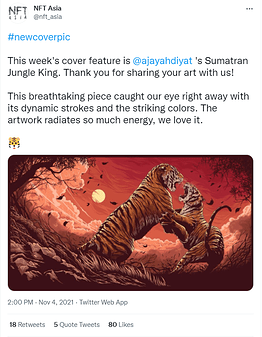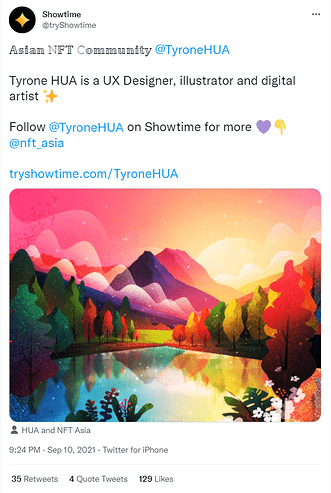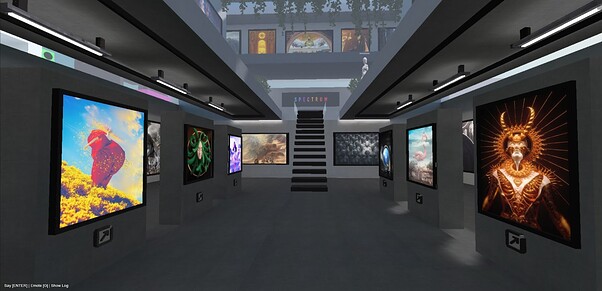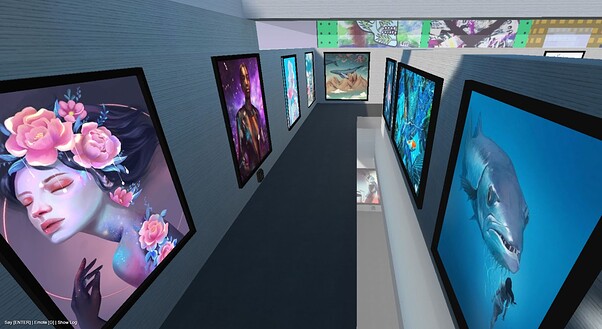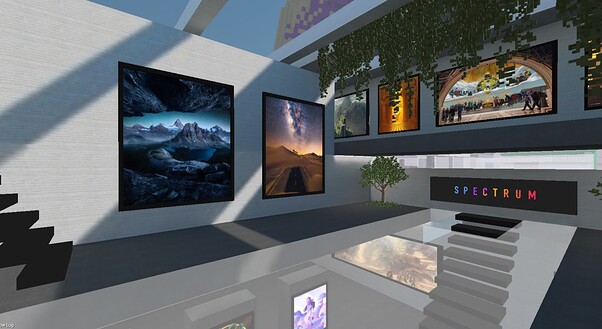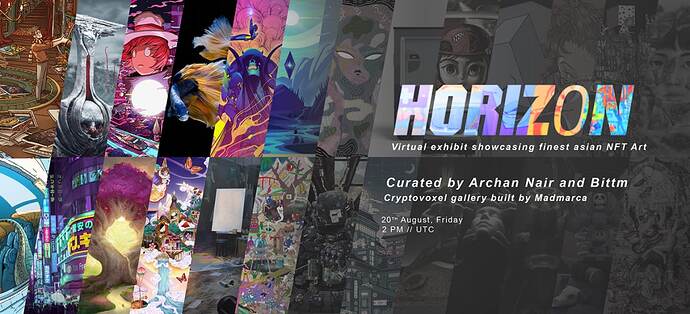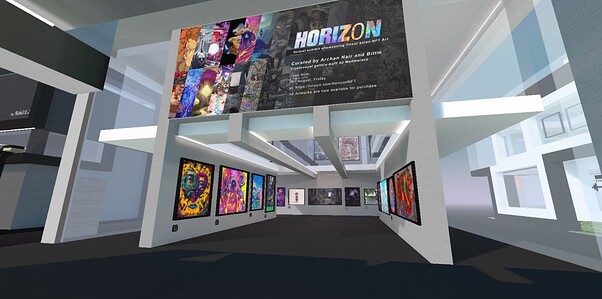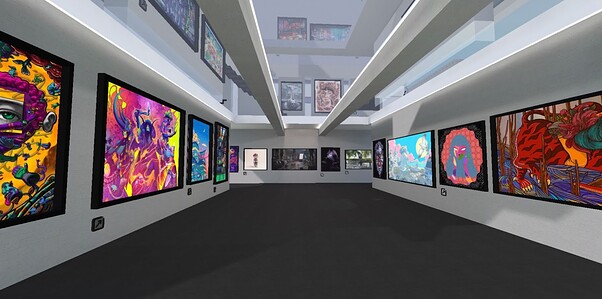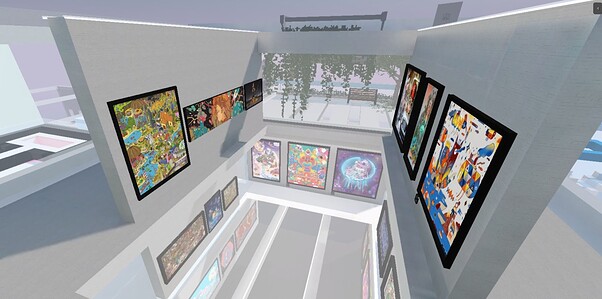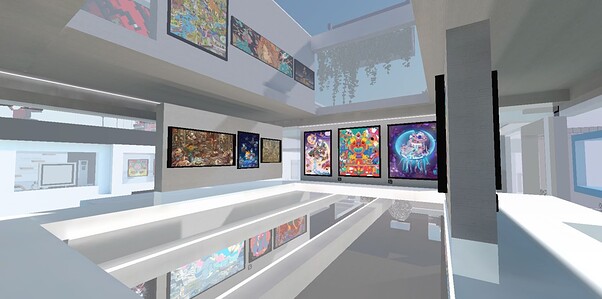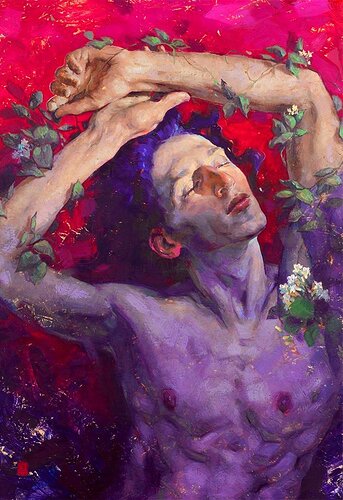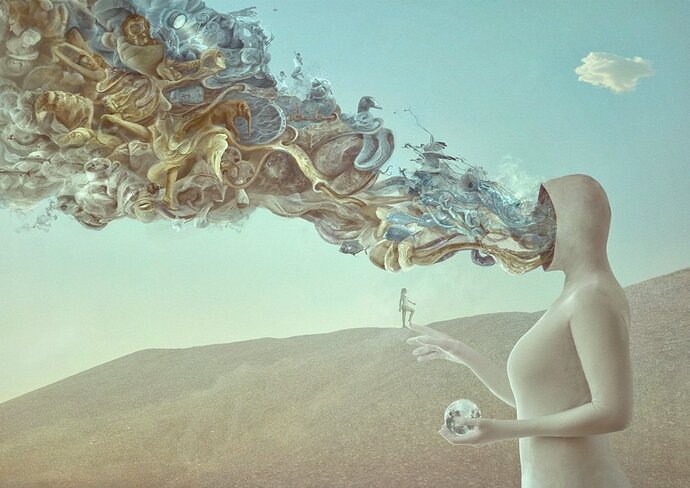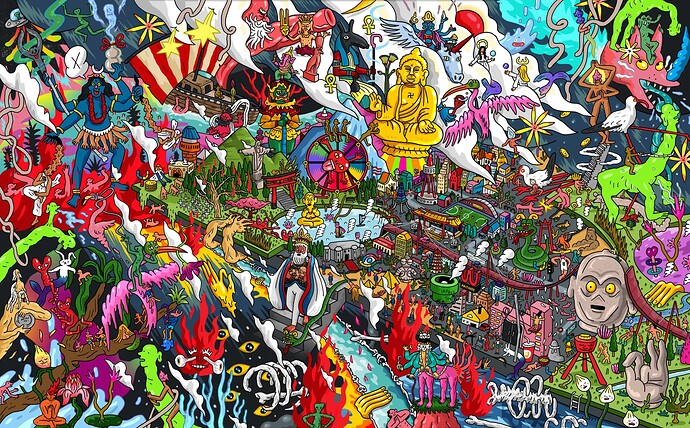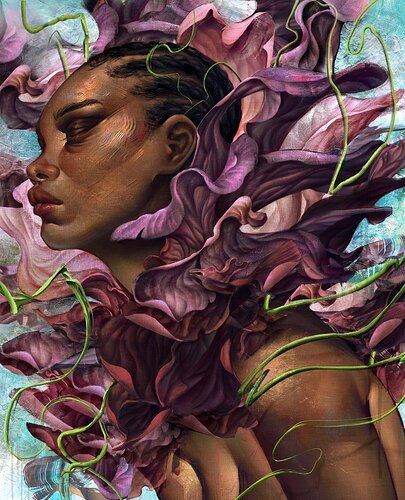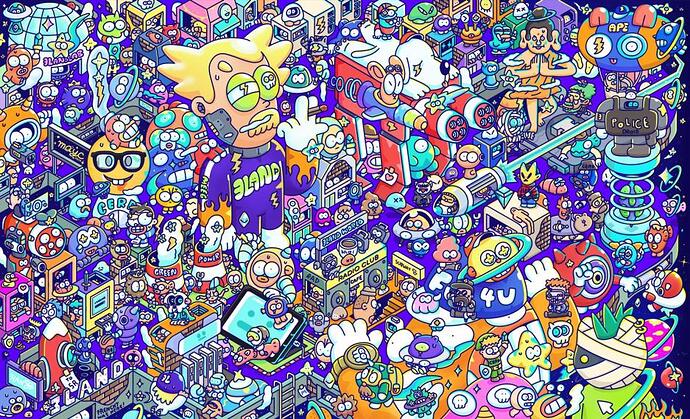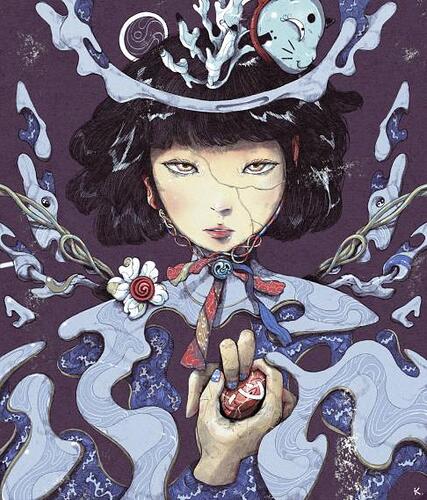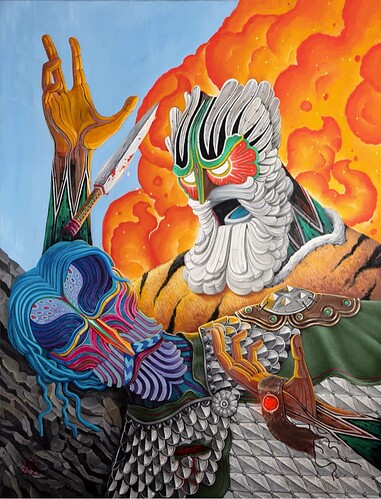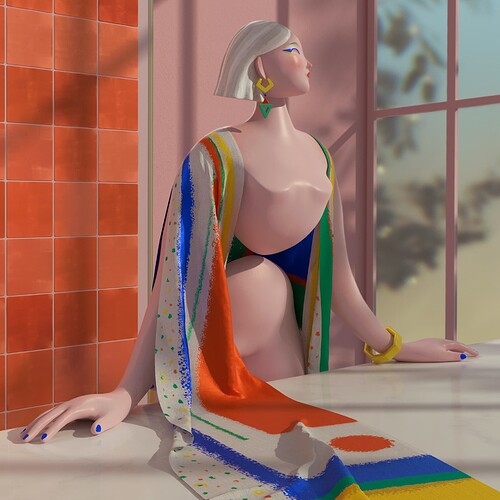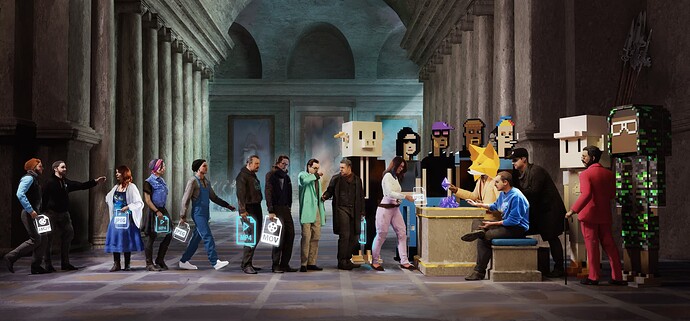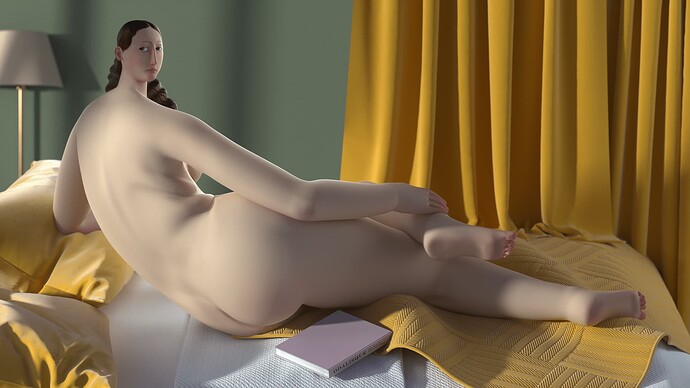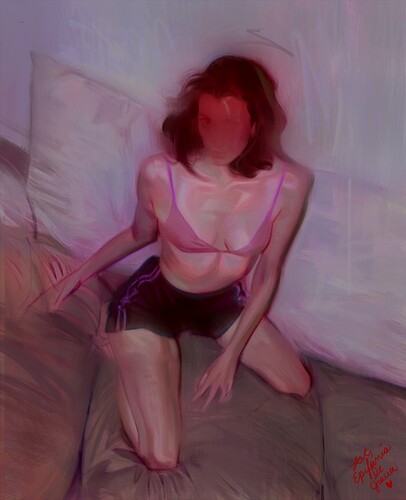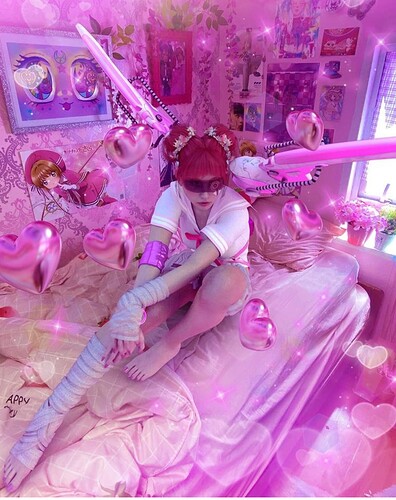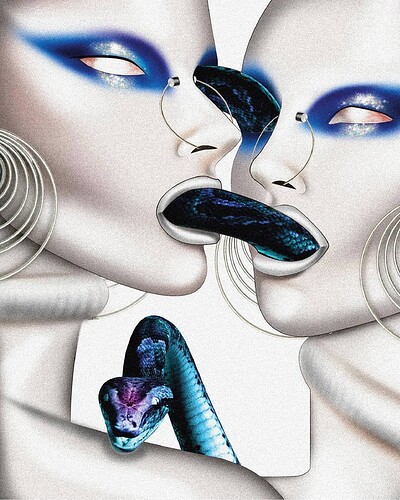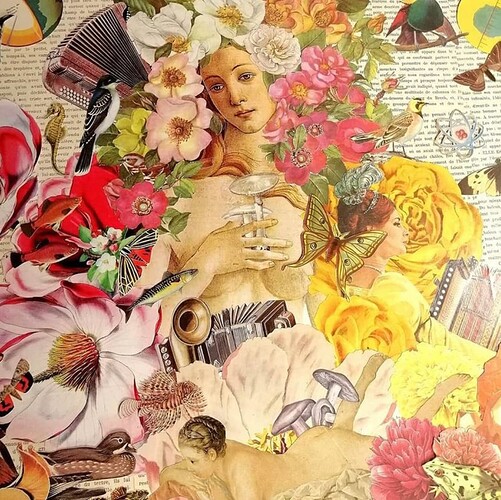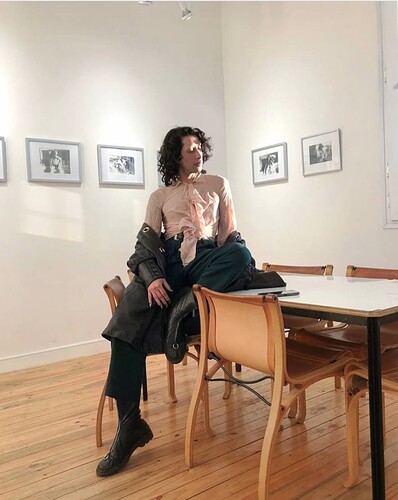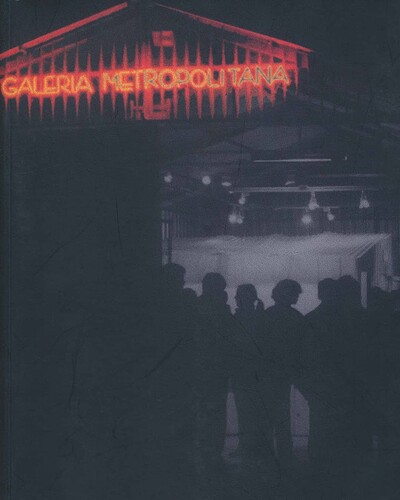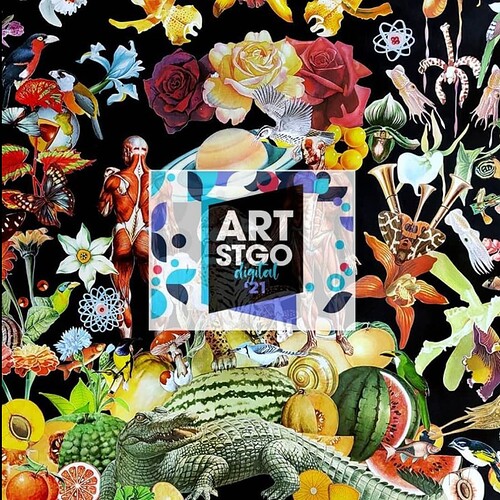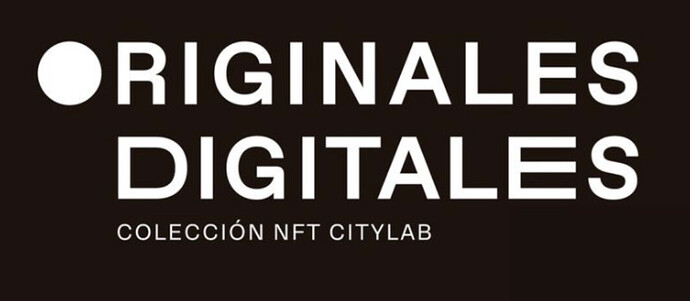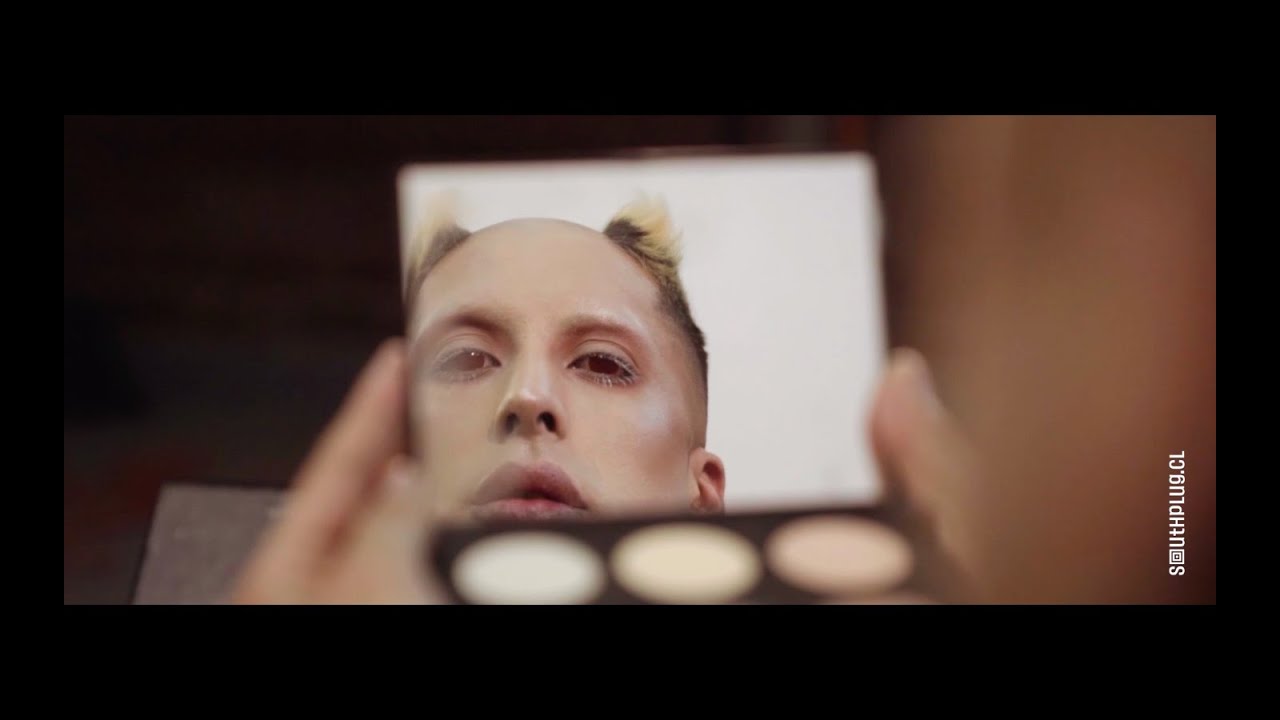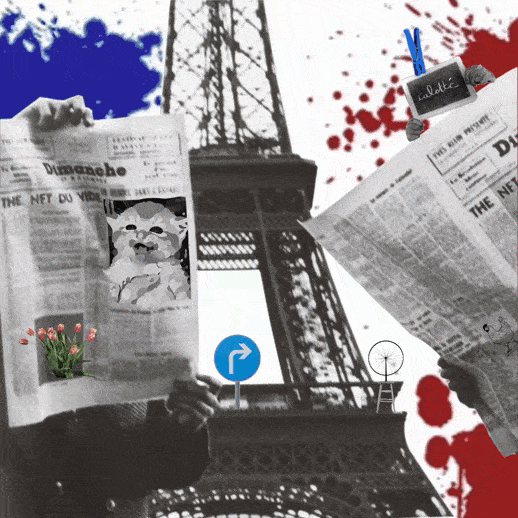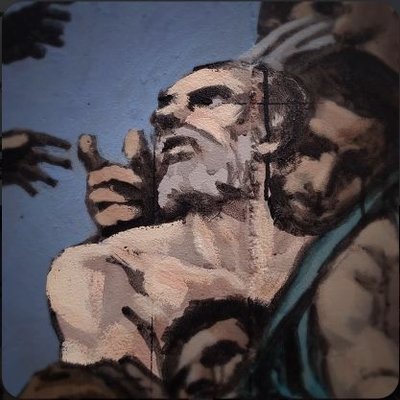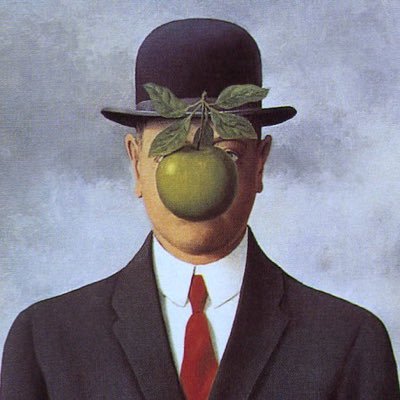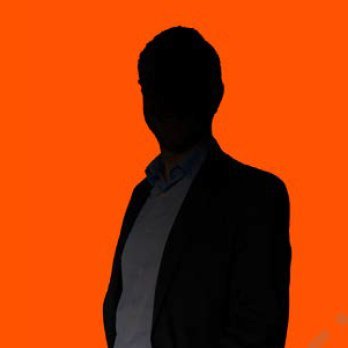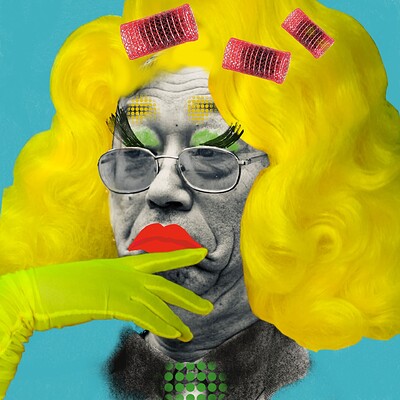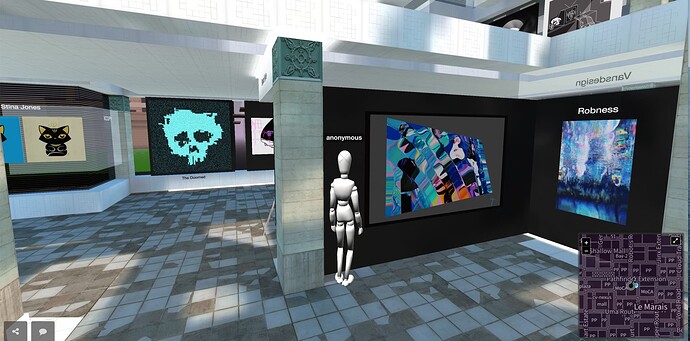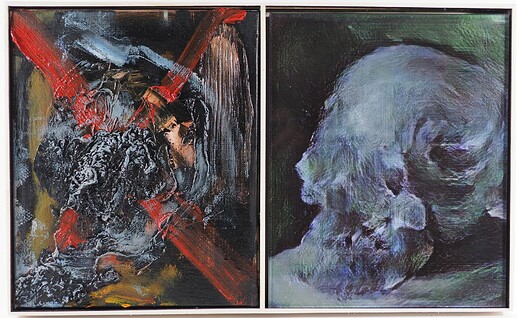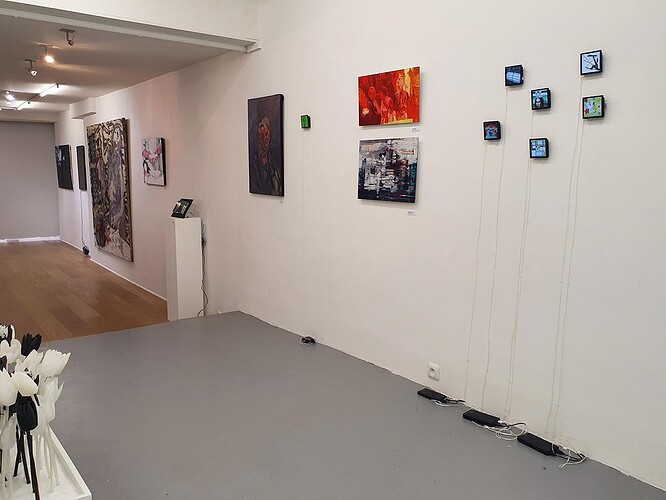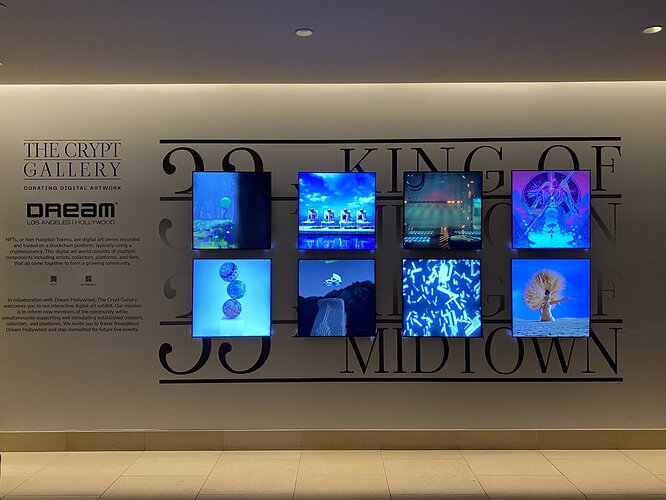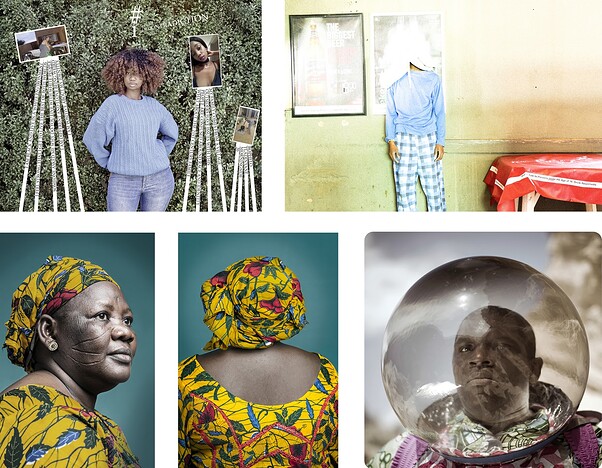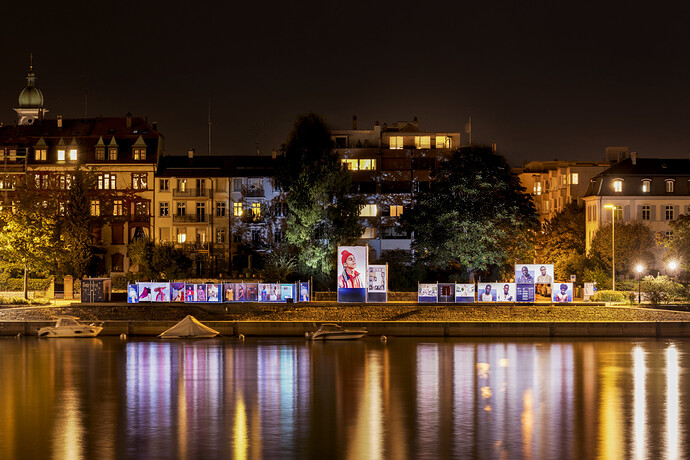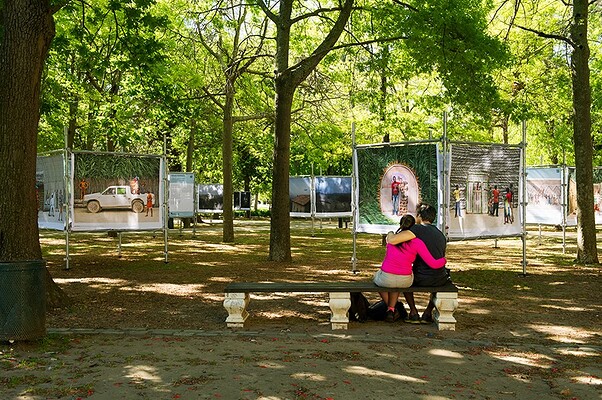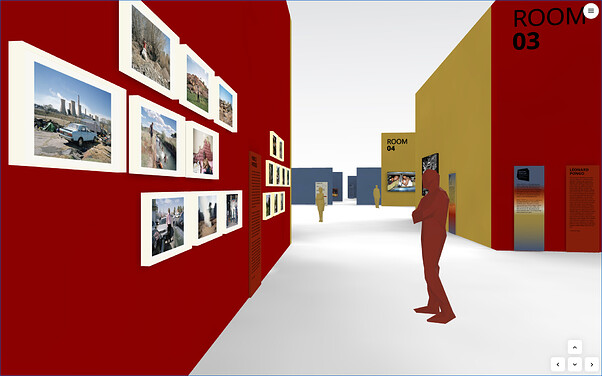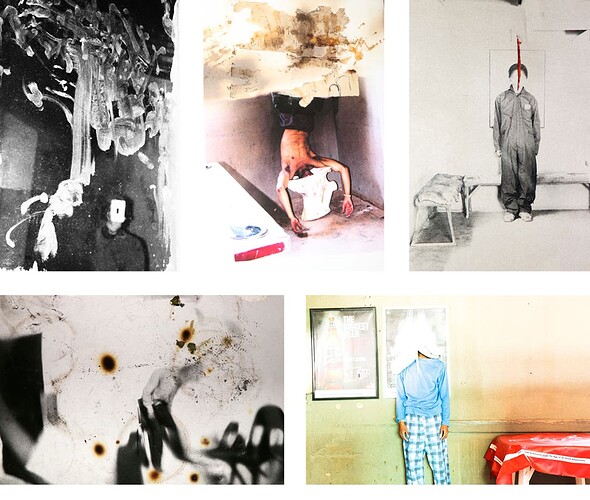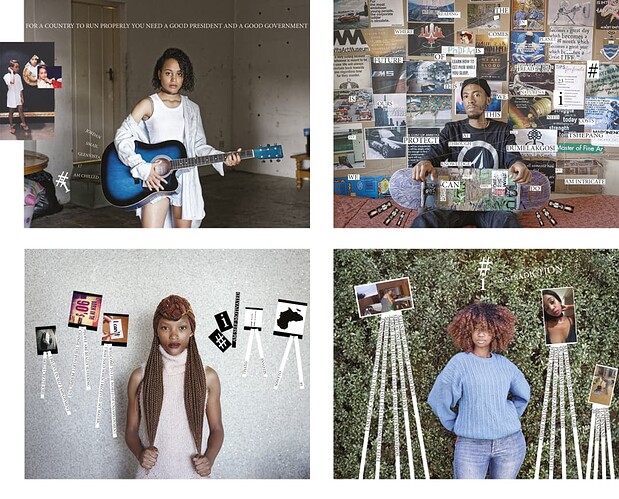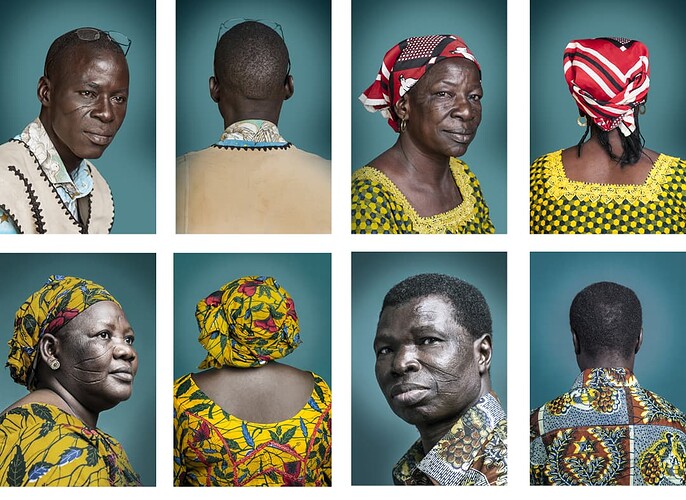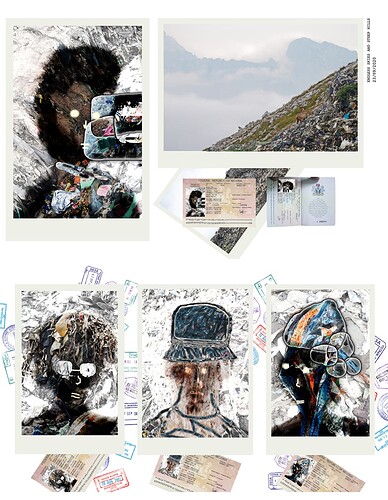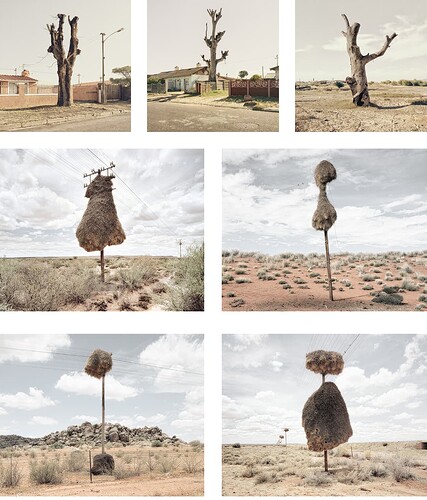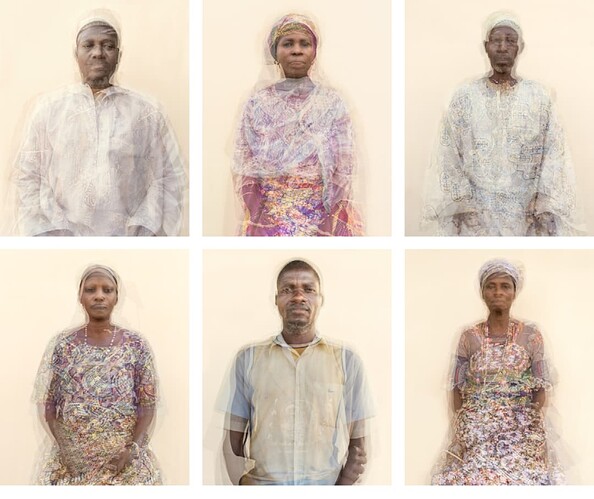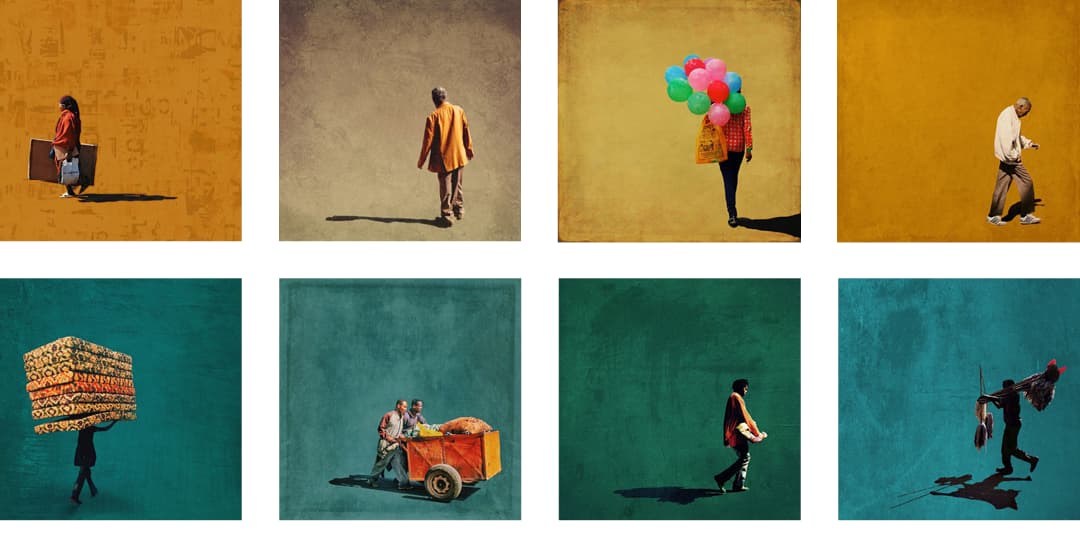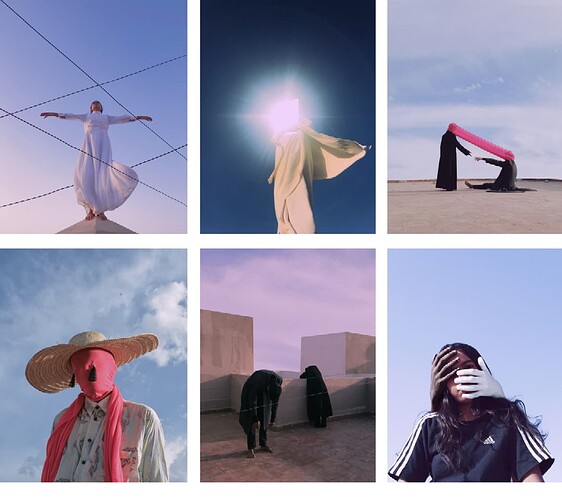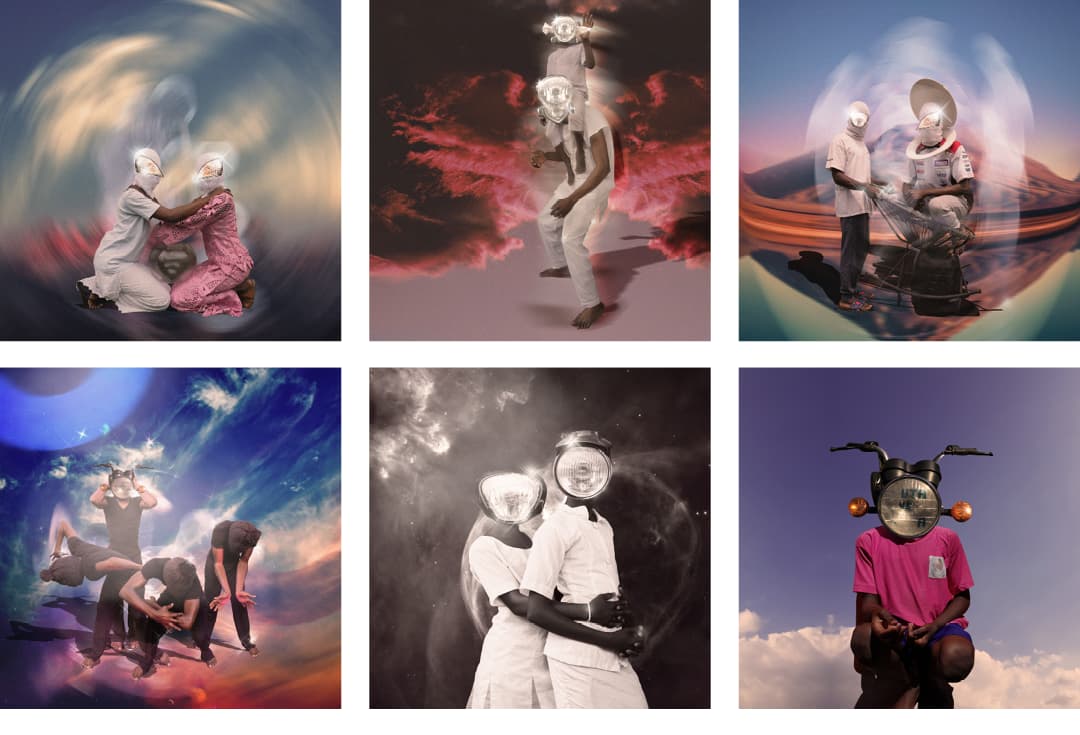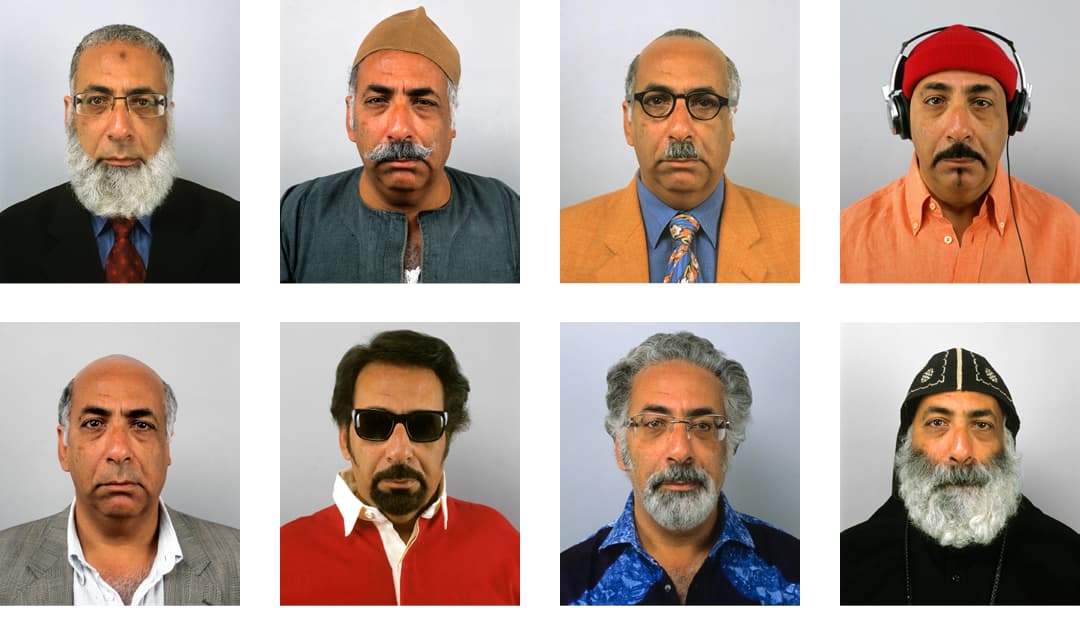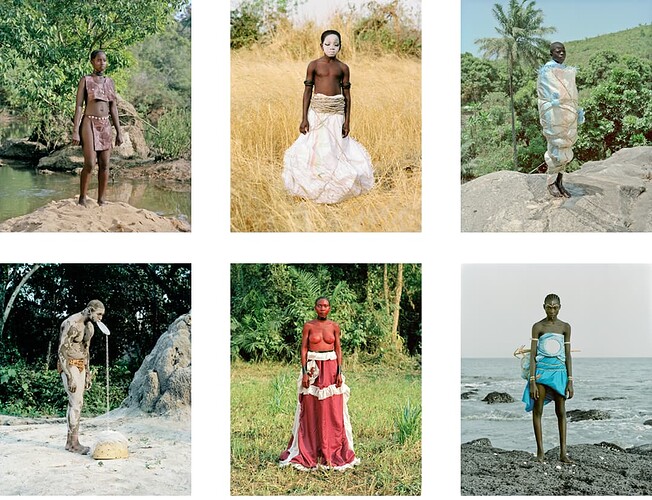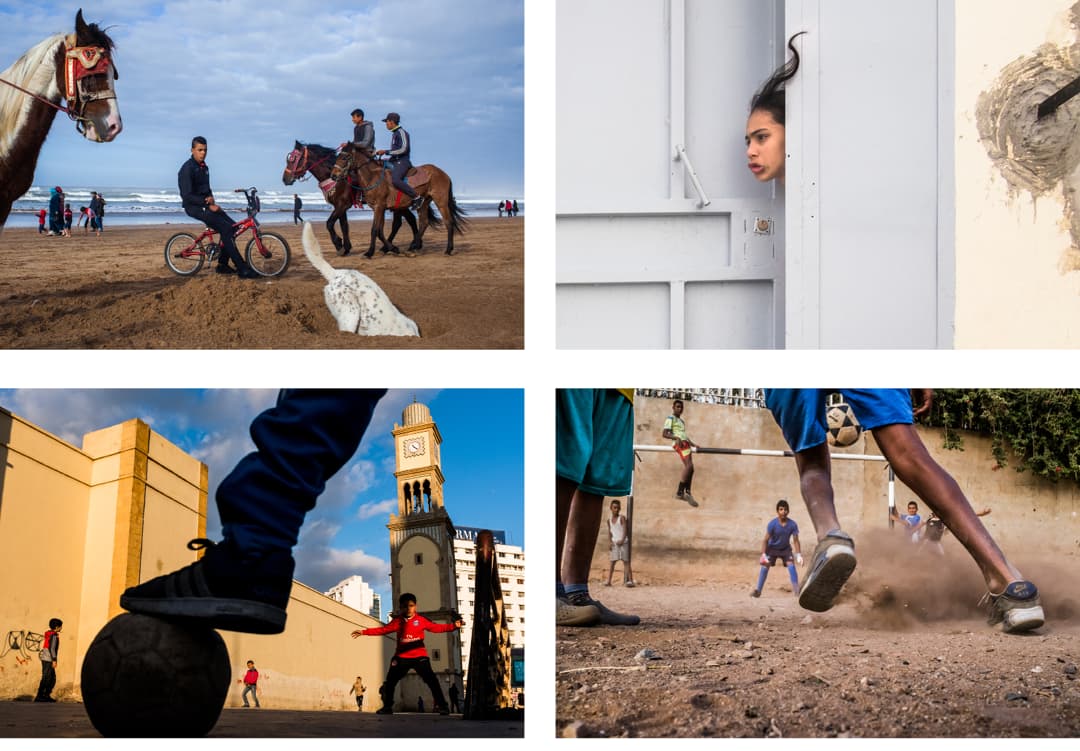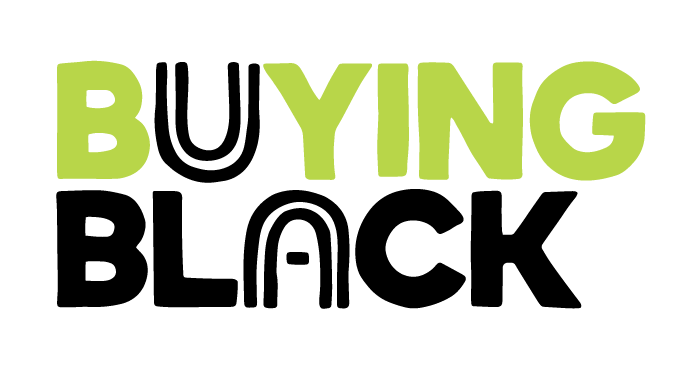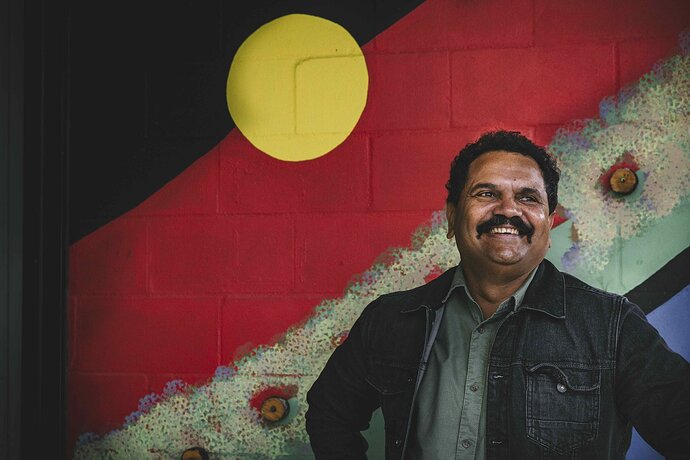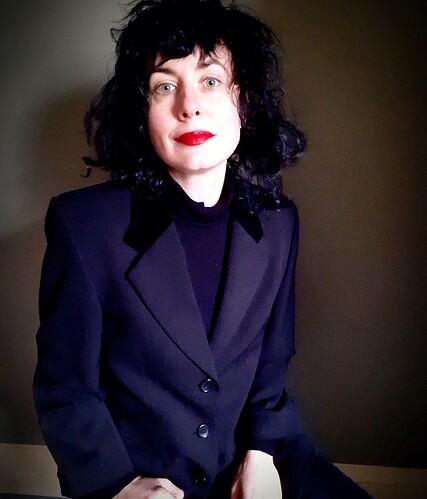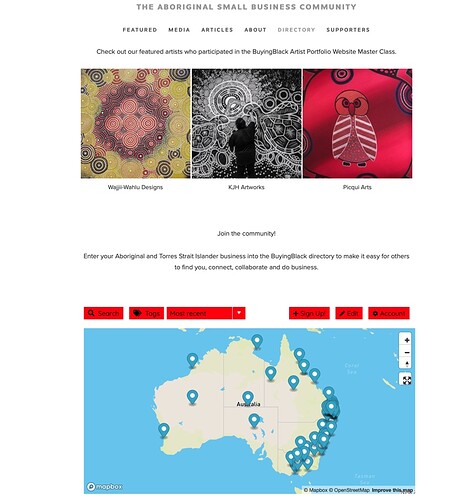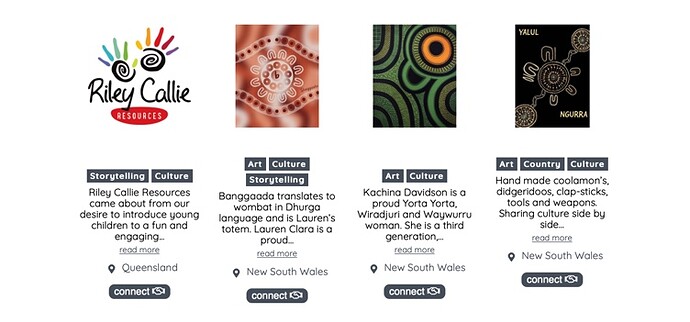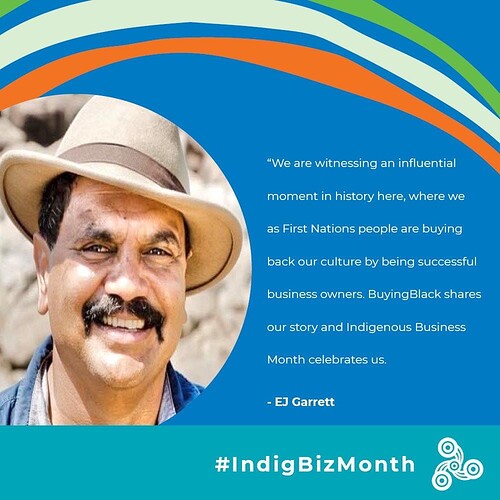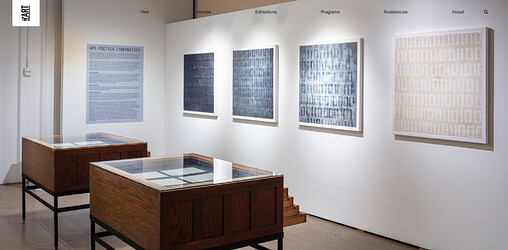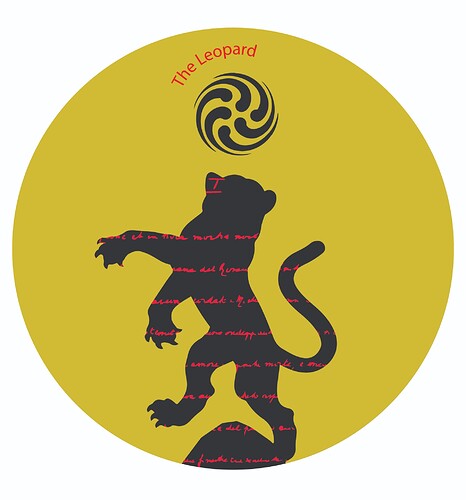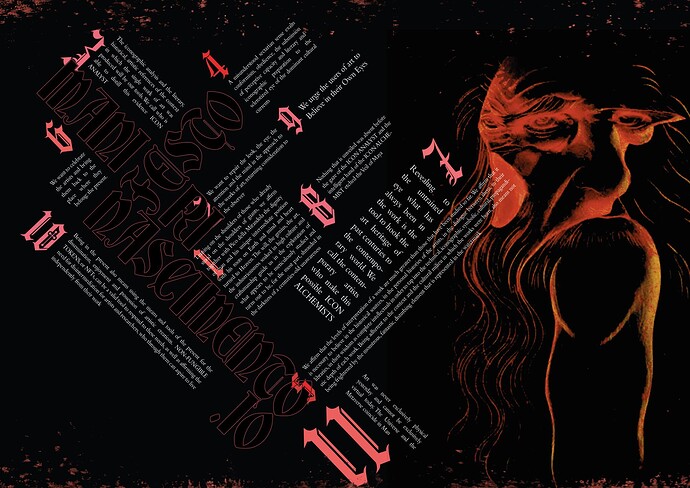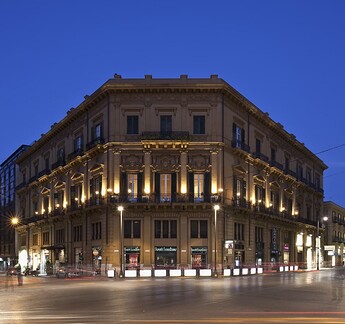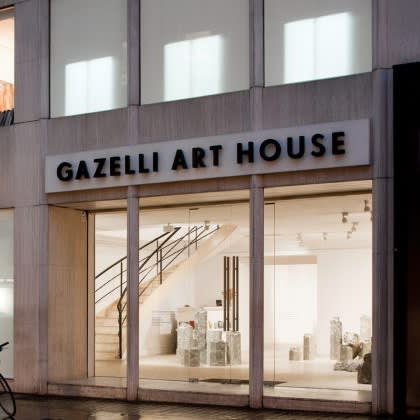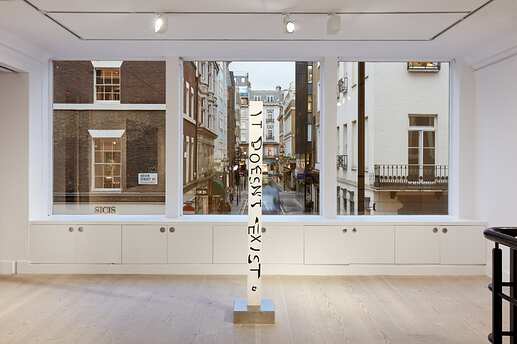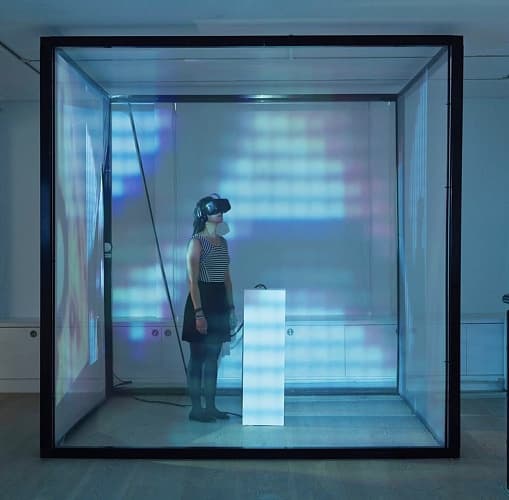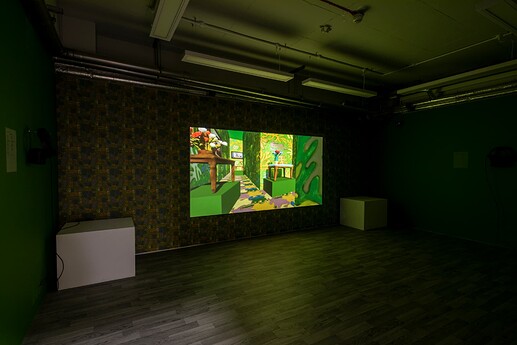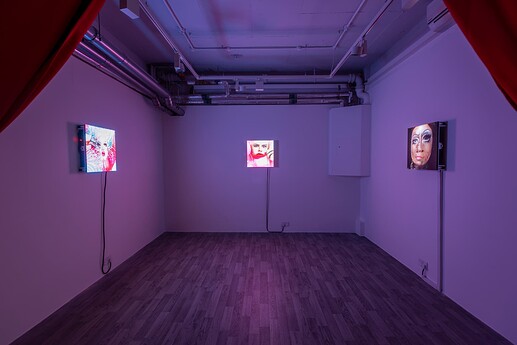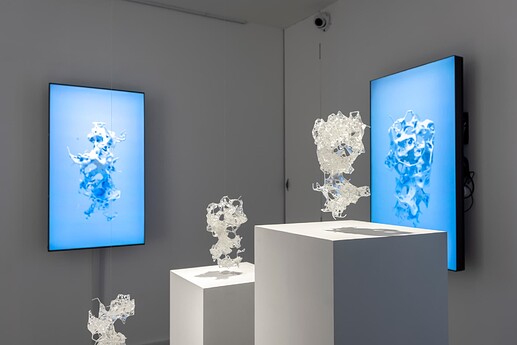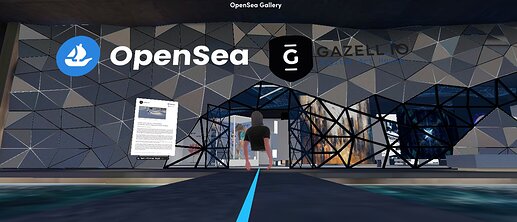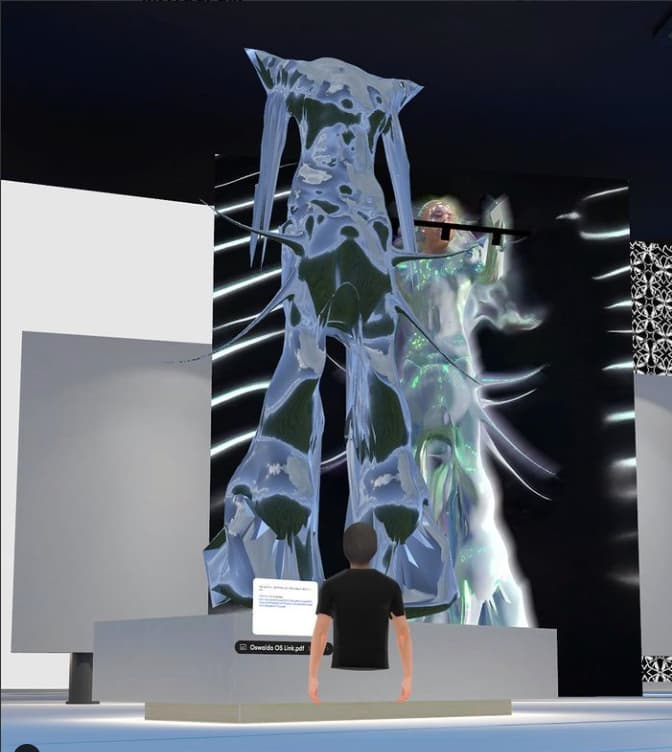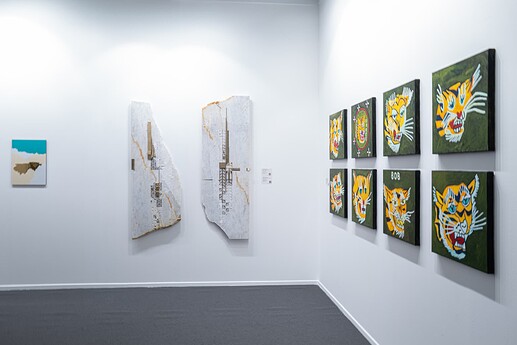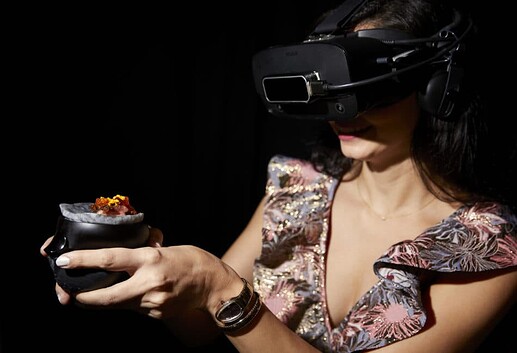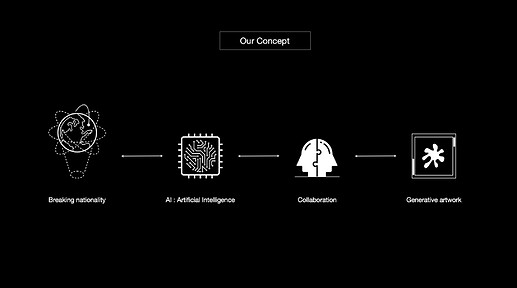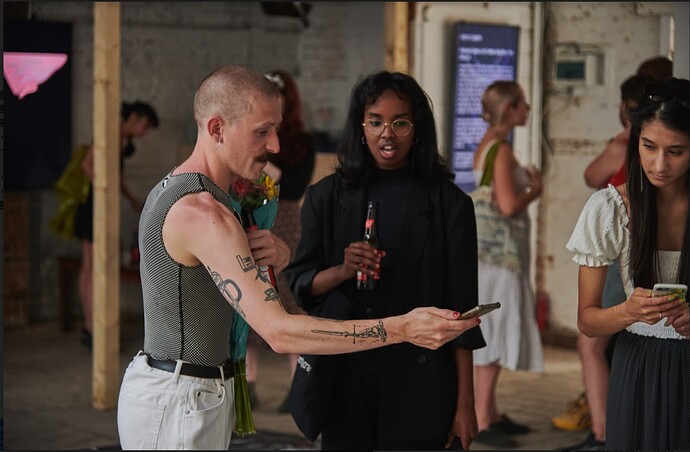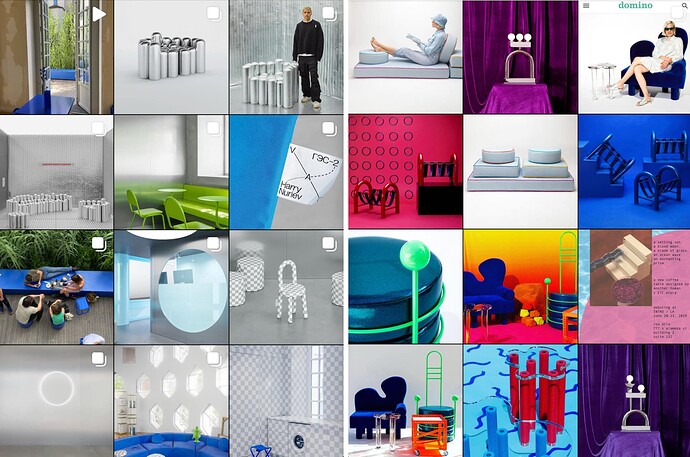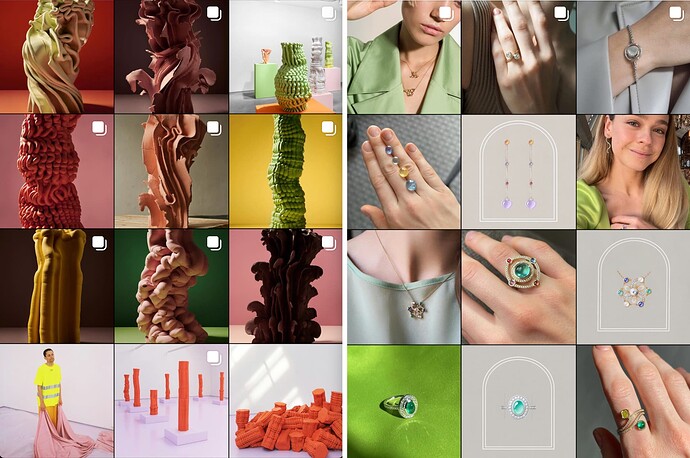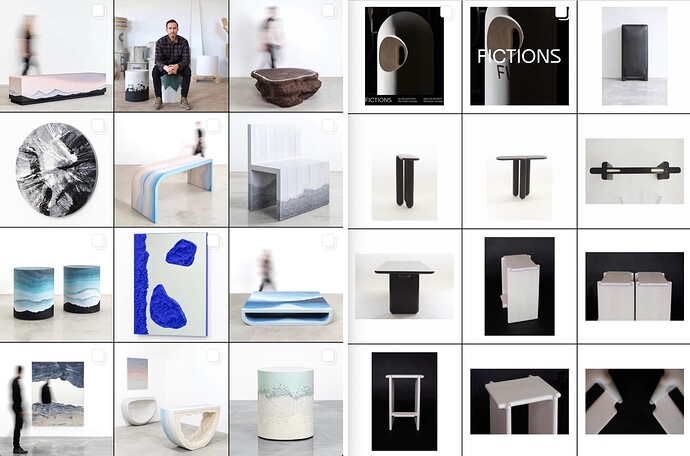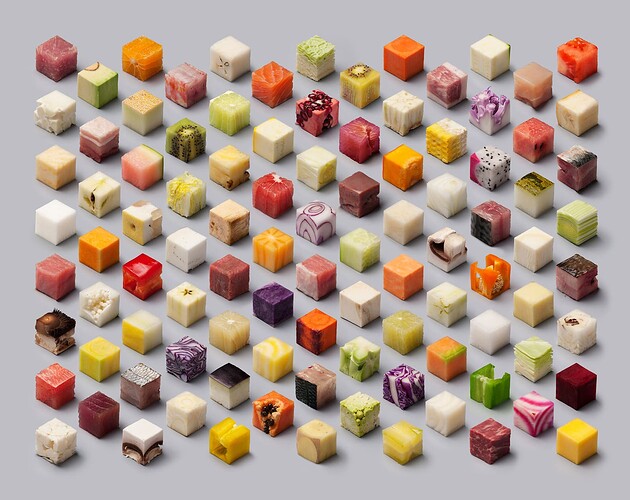1. Space name / team name:
WheelHouse Art
2. Name of primary contact:
Daniel Pfalzgraf
3. Names of additional Space admins:
N/A
4. SuperRare username(s) of everyone who will be a Space admin:
Daniel Pfalzgraf’s account is @Cr8_alt_del, though a new account will be created for the WheelHouse Art Space.
5. Short bio of you and/or your team:
Daniel Pfalzgraf is a multi-media artist and curator who has been exhibiting art and working for art museums and galleries for over 20 years. He earned a BFA in drawing and sculpture from Murray State University and an MBA from Indiana University Southeast.
January 1, 2021, Pfalzgraf purchased B. Deemer Gallery, a premier art gallery founded in Louisville, Kentucky in 1990. Since taking ownership of the gallery, Pfalzgraf has begun rebranding it as WheelHouse Art, LLC, a multi-faceted fine art and services provider.
Prior to owning WheelHouse Art (WHA), Pfalzgraf was the art curator for the Carnegie Center for Art & History in New Albany, Indiana. Pfalzgraf was also previously Director of the green building gallery, Director of Media Services at B. Deemer Gallery, and an assistant preparator at the Speed Art Museum (all in Louisville, Kentucky) and was the Media Coordinator at Bill Lowe Gallery in Atlanta, Georgia. He has also worked as an independent curator creating exhibitions under the name of LoCAL.gallery.
Pfalzgraf’s most recent series of his own artwork, Kentucky Game, are blind contour drawings on paper painted in with oil paint and other mixed media and explore the themes of attraction, hunting, and collecting. Pfalzgraf has also been developing digital artwork as part of the Kentucky Game series.
Beyond art, his interests include wolves, soccer, skateboarding, and ice cream. In that order. Woof.
6. Website & Social Media Links:
WheelHouse Art, LLC:
https://www.facebook.com/WheelHouseArtGallery
https://www.instagram.com/wheelhouseartgallery/
Daniel Pfalzgraf:
https://dpfalzgraf.com/home.html
7. Summary/manifesto of your Space. What is the unique value prop / elevator pitch? What type of art will you focus on? How will your Space stand out among the crowd?
The WheelHouse Art (WHA) Space will be an online exhibition extension of the WheelHouse Art brick-and-mortar space.
WHA will focus on multi-disciplinary artist, integrating artwork that crosses over both digital and analog worlds. The goal of WHA is to expand the practice, appreciation, and collecting of contemporary art, and digital-based work through platforms like SuperRare is an opportunity for growth.
The biggest room for growth in NFTs is engaging with art enthusiasts who have little to no experience creating, displaying, and collecting digital artwork. The current NFT audience are heavily skewed towards a young and technically savvy individuals. WHA will engage with base audiences already on the SuperRare platform, while growing participation by catering to multi-generational artists and collectors who aren’t new to art collecting, but new to NFTs through it’s well-established gallery.
8. Describe you/your team’s experience curating and promoting artwork:
Daniel Pfalzgraf began curating art exhibitions in 2010 when he started independently curating in Louisville, Kentucky under the name LoCAL.gallery, where he curated exhibitions for the Speed Art Museum, the Muhammad Ali Center, and the City of Louisville Metro Hall, among other spaces. Shortly thereafter, he curated shows for the green building gallery, which he ran from 2012 – 2015.
Prior to becoming a gallery owner in January, Daniel Pfalzgraf was the curator for the Carnegie Center for Art and History from 2015 – 2020. In all, Pfalzgraf has organized over 50 exhibitions over the past 11 years, over 40 of which he curated himself.
Pfalzgraf’s life mission has always been to expand the understanding and appreciation of contemporary art to more people. That mission began as an artist creating unique, immersive installation-based artwork, and has continued to grow through his curation practices. At the heart of his curating, Pfalzgraf seeks unique, personal associations to attract broad audiences, and populates the exhibitions with high-quality work. By providing a point of reference to start with, exhibitions curated by Pfalzgraf give viewers a level of comfort that allows them to freely explore the artwork regardless of how much experience they’ve had with contemporary art in the past.
Here is a sampling of just some of the exhibitions Pfalzgraf curated while at the Carnegie Center that represent the diversity of art, themes, and artists Pfalzgraf promoted through the museum:
#BlackArtMatters, February 3 – April 9, 2017
This is an exhibit born out of the #BlackLivesMatter movement, created to provide space for people to be seen and heard. This exhibition is about sharing histories and celebrate lives, and to encourage understanding and respect among neighbors. In this moment in history, the Carnegie Center for Art & History felt a sense of urgency to share our space to highlight the work and vision of both local and national African American artists to bring national conversations to our space and community.
Artists include: Ray Dalton, Stephen Flemister, Robyn Gibson, Natasha Giles, Christina Long, Fahamu Pecou, LaNia Roberts, Dread Scott, Scheherazade Tillet, Shawn Michael Warren
Pulp Art: Out of the gutter and on the walls, May 12 – July 8, 2017
An exhibition exploring the enduring influence of comics, an art form created for the masses, and the personal, individual influence comics has had with each of the artists in this exhibition. A direct evolutionary line can be traced from early Superman to Stan Lee to Robert Crumb to the artists included in Pulp Art: Out of the gutter and on the walls. The variation of voice and style born from the humble pulp beginnings is truly remarkable.
Artists included: Kerry James Marshall, Joel Mcdonald, Andrei Molotiu, Yoko Molotov, Niagara, Robert Pruitt, Seth Scantlen, Malcolm Mobutu Smith, Britt Spencer, Fred Stonehouse
Biophilia Life; or, My Best Friend Has Four Legs and a Tail, December 14, 2018 – February 9, 2019
A group exhibition featuring work by prominent local and national artists who explore the unique connection between humankind and domesticated animals.
Artists included: Rachael Banks, Malcolm Bucknall, Timothy Callaghan, Gaela Erwin, Carlos Gamez de Francisco, Sonya Yong James, Douglas Miller, William Wegman
Blunt: Inspiration in Transition, August 3 – September 28, 2019
A group exhibition of artwork by prominent local and national artists whose lives and work are influenced by the creative culture of skateboarding. This exhibition was created to celebrate the New Albany Flow Park—a 15,000 square foot skateable work of public art spearheaded by Daniel Pfalzgraf and opened in 2019.
Artist included: Leo Baker, Lori Damiano, Mark Gonzales, Ben Horton, Matthew McDole, Joseph Minek, Don Pendleton, Jared Steffensen, Tony Tafuro, Leon Washere
OSRS Presents… Marks on Society, December 7, 2019 – February 8, 2020
A graffiti-inspired art exhibition presenting work by some of the best graffiti artists in the area for an exhibition of graffiti painted directly on the walls inside the museum. Marks on Society was a changing exhibition, altered and updated during the course of the show similar to how popular graffiti spots get painted on, buffed out, and painted over again.
By highlighting the artistry, people, and process of the graffiti art form, Marks on Society challenged stereotypes of street art and transformed the museum space. Gallery text and programs shared the history of graffiti, terms and lessons on different styles, materials, culture, and intentions of artists.
Artists included: Levis, Jiggle, Wasp, and MFK
Permanent and Natural, February 21 – August 1, 2020
A group show featuring hair as a form of personal expression, as cultural relic, and as artistic medium. Permanent and Natural explored the diverse contexts in which artists have incorporated the natural, malleable material that is deeply connected to individual and community identity.
Artists include: Alison Braun, Sonya Clark, CreativeSoul Photography, Y. Malik Jalal, James Russell May, Gabrielle Mayer, Fahamu Pecou, Steve Spencer, Alexis Eke, Stacey Vest
9. Describe you/your team’s experience organizing exhibitions, making art sales, running auctions, networking with collectors, etc.
Pfalzgraf has worked in art museums for over seven years, and in commercial art galleries for over 14 years. He has organized over 50 exhibitions in the past 11 years, over 40 of which he curated himself. He has also juried over a dozen more exhibitions over that time.
It was his extensive work with art collectors that made him realize it was time to leave his stable career as an art curator at a museum to become a gallery owner. Seeing gaps in the art market that weren’t being served, Pfalzgraf has expanded the gallery he took over with more work and services. This has led to the gallery to being on pace for one of its best years in its 30-plus year history.
Much of this success can be attributed to Pfalzgraf’s experience working with artists and collectors, building exhibitions and marketing them. In the past ten months, Pfalzgraf has increased the gallery’s Instagram followers by 55.5% since taking over. He has also created a new gallery website, replacing an outdated site that wasn’t mobile friendly to one with ecommerce capabilities. These updates, combined with a dedicated online marketing program, have already seen a net positive effect with multiple online sales of artwork from new clients, shipping artwork to multiple states throughout the Eastern United States.
10. Are there new artists you’d like to bring into the Space in the first six months? What is your relationship to them?
11. Are there any artists already in the CryptoArt space that you are planning to work with for this Space? Have they committed to participating yet?
A primary focus for WheelHouse Art (WHA) is to promote and support art and artists connected to Louisville, Kentucky and regionally throughout the Southern and Midwestern United States (Kentucky, Indiana, Ohio, Illinois, Tennessee, Georgia, Alabama, Missouri, Virginia, West Virginia, Michigan, Pennsylvania, and Wisconsin).
WHA will achieve this first by bringing in new artists to the platform from the region who have little experience in the NFT universe. That will get creators here recognized more broadly outside of the region. Kentucky is a state full of talent, but largely behind the curve when it comes to societal-technological advances. WheelHouse Art has been developing a roster of artists whose artwork readily translates between traditional physical artwork and digital formats. A few of the artists who have express interest in showing with the gallery digitally include:
Madison Cawein Login • Instagram
DB Ka$h Login • Instagram
Thaniel Ion Lee Login • Instagram
Matthew McDole Login • Instagram
Yoko Molotov Login • Instagram
Sazi Thomas Login • Instagram
Aggie Zed Login • Instagram
Another opportunity for WHA to support the artists and collectors here would be to exhibit already established artists showing work on CryptoArt platforms in an effort to educate collectors and show artists what is possible.
WHA has not contacted any current CryptoArtists about the possibility of exhibiting in this online Space yet, but would begin reaching out to some of the contacts owner Daniel Pfalzgraf has made over the years engaging with the community on Twitter, at Eyeo Festival, or while working on an exhibition for the Carnegie Center that subsequently got cancelled when Pfalzgraf left to take over the gallery (*more on that later, see question 16).
12. Please provide any additional details you can about how you plan to operate this Space; e.g. cadence of exhibitions, auction strategy, number of artworks, other ideas for promoting your art and artists, etc.
WheelHouse Art’s (WHA) current exhibition schedule currently runs on approximately 60 day cycles, or roughly six full-gallery change-overs per year. The gallery features one main primary exhibition of a solo, duo or group of artists, as well as two to six smaller secondary collections of artists’ works on display throughout the gallery.
Each main primary exhibition typically has approximately one to two dozen pieces on display at a time, and stay on display for the full 60+ day exhibition period. The smaller featured secondary collections exhibit up to a half dozen pieces by a single artist and the amount of time the work is on view is less defined. Sometimes they will stay on view for the full 60+ day period as the main primary featured exhibition, while sometimes they may get changed out after a period of a few weeks.
The WHA Space on SuperRare would likely follow a similar pattern. Initially, the online exhibitions may be independent of the physical exhibitions on view in the gallery space as the gallery works on developing its base of artists who create both analog and digital artwork. Eventually, WHA will integrate exhibitions in both spaces simultaneously. So, for example, an exhibition of artwork by Yoko Molotov will be hosted with analog work in the gallery space while digital work will be available online at the SuperRare WHA Space. Ideally, WHA would include a display in the gallery space showing the WHA Space, so visitors to the physical gallery will more readily associate the two exhibitions as being a part of one larger experience. And from the opposite side, visitors to the SuperRare WHA Space will have links to view and purchase the physical artwork available should they be interested in the owning cross-media work by an artist.
For clarification, the artists themselves will decide what they create artistically. The digital work they make may be a separate experience from the physical work should they so choose. Sometimes the two bodies of work may reference one another, and at other times they may decide to make one-for-one versions of the same imagery (like displaying prints of their digital pieces, for example).
Exhibitions and artists will be promoted online via website, email newsletters, social media platforms, and dedicated press releases the gallery’s 160+ media contacts, as well as through paid online advertising, primarily via Google and social media. WHA will also likely offer discounts on physical artwork sold in the gallery to anyone who also purchases digital work through the WHA Space.
As of now, WHA plans to roll out auctions six to 12 months after the WHA Space has opened, allowing the Space to accumulate enough traffic/followers to produce demand for competing bids. WHA will likely begin by offering auctions of individual pieces or small collections of work by in the secondary collections. This will allow new collectors to the space to become acclimated to the process of bidding. As auction action matures in the Space, WHA will open more auctions with artwork in the primary featured exhibitions. The details may change, but as of right now WHA will likely offer a “buy now” price for collectors when an exhibition opens. About three weeks after an exhibition opens, a portion of the pieces on view will be become available for auction, with a reserve price of approximately 60% of the buy now price. The auctions will remain open for one week. During the last week of an exhibition, the remaining works that are still available will be put up on auction with a reserve price of 50% of the buy now price.
13. How do you plan to structure commission rates for the artists who release in your Space?
The physical WheelHouse Art (WHA) gallery space operates with traditional artist/gallery commission rate of 50% Artist/50% Gallery sales splits.
However, given the reduced overhead anticipated operating the WHA Space online, and the engagement curve of starting a new space, WHA expects to initially start with the default 85% Artist/10% WHA Space/5% SuperRare sales commission splits. As the WHA brand expands, with steady track record of increased sales and more money and resources are poured into maintaining and promoting the Space, WHA will likely increase its commission another 5% for a sales breakdown of 80% Artist/15% WHA/5% SuperRare.
One thing Daniel Pfalzgraf has picked up from the CryptoArt world, and from SuperRare in particular, is the practice of providing artists with commissions off sales not only from the first-time sale of an artwork, but from additional sales on the secondary market. Thanks to this practice that SuperRare has helped make standard practice, WHA also provides a commission split for any living artist whose work is resold through the gallery on behalf of a client, with 65% Seller/30% WHA/5% Artist sales splits of secondary art market sales. A rare, if not otherwise unheard-of, practice in the traditional art world, all thanks to the CryptoArt community.
If WHA Space will also be able to structure commission rates for secondary market sales of work originally purchased in the WHA Space, then it would look to structure something around 90% Seller/8% Artist/2% WHA to 85% Seller/10% Artist/5% WHA sales commission splits.
14. To you, what is the importance of NFTs as a medium/technology? Where do you see the NFT and CryptoArt space in five years?
Everyone knows the ever-increasing integration and consumption of technology, screens, internet access has developed in society, blah, blah, blah…Everything that has been written about how NFT/blockchain technologies are finally providing proof of ownership and provenance to unique digital assets to allow the artworld to catch up and participate in this every expanding digital culture is all true. We all know this, we all get it.
What is really interesting to Daniel Pfalzgraf are other shifts in social practices that NFTs can integrate with more than traditional artwork has. Specifically, he looks at shifts in attitudes towards material ownership and mobility of Millennial and Gen-Y segments. 20 and 30-somethings are purchasing fewer homes, and renting more. Fewer are buying cars, and are instead are relying more on ride-sharing/biking/public transit/etc.
This is a shift in personal mobility, with fewer attachments to spaces and objects. Though that doesn’t mean people will be uninterested in art or collecting. What it means is they aren’t as interested in buying a six-foot wide painting that they have to pack up and take with them every time they move across town or across the country. With NFTs, one only needs internet access to take with you if you want to move to San Francisco for six months, followed by a year in Japan, and everywhere else you may want to live around the world for any amount of time. CryptoArt can also be more readily bought and sold to match your desires and attachments at any given time.
A second aspect to look forward to with CryptoArt over the next five years is the expanding development and integration of 5G and Internet of Things (IoT) technologies. One of the biggest barriers for CryptoArt is the transmutability of viewing artwork. You can easily view your collection on your phone, tablet, or computer, but hopefully Dapp development will better integrate with IoT tech to easily view/display your CryptoArt collection on television screens, as well as screens in vehicles, refrigerators, public spaces, or anywhere someone wants to personalize their environment.
15. If your Space were a cocktail or a dish, what would it be and why?
WheelHouse Art (WHA) is based in Kentucky, so above all else, our answer to this question absolutely must involve bourbon. And being in Louisville, we are particularly attached to Brown-Forman bourbons like Old Forrester, or our favorite Woodford Reserve.
Now that is established, WHA can be characterized best as an Old Fashioned. That may not sound like a great moniker to associate with one of the youngest and most exciting movements in the artworld but let me explain.
The Old Fashioned has been around for a long, long time. WHA was founded 31 years ago, a considerable amount of time for an art gallery. Old Fashioneds are gateway cocktails for people who know they want something nice but may not be familiar with classic cocktails. WHA is above all a service, connecting art lovers and the art curious with art they will love, regardless of how familiar they are with contemporary art. Collectors may not always know what they want when they come here, but they know and trust that we show quality. An Old Fashioned is made with a high-proof bourbon, sugar, bitters, ice, and a garnish. It’s strong, and it can be a little sweet, and sometimes a little bitter. It’s meant for sipping and savoring. The ice lets it go down cool and smooth, while the bourbon still gives a little bite. The garnish is a nice little touch of flare that sets it off.
That is exactly how one would describe WheelHouse Art.
16. Anything else you’d like the community to consider?
You may recognize that while WheelHouse Art and Daniel Pfalzgraf is deep in traditional art experience, their experience with digital and CryptoArt is a little shallower. That is a fair point.
Pfalzgraf has been following digital and CryptoArt since early 2018 like many new followers at the time after stumbling across “What is CryptoArt?” by Jason Baily on Artnome.com. Since then, Pfalzgraf has put himself into the position of experiencing how one engages with CryptoArt both as an artist and a collector by minting work on Pixura, and purchasing artwork on SuperRare.
Pfalzgraf was also working on co-curating an exhibition of digital artwork with Luba Elliott while at the Carnegie Center for Art and History. The show, titled Past Performance as Indicator of Future Outcomes, was going to be the first exhibition of Artificial Intelligence based artwork in the region, and it was going to be exhibiting work entirely by women working with AI. Unfortunately, when Pfalzgraf left the museum to purchase the gallery, the museum leadership decided to cancel the exhibition rather than have him continue working on it.
Even though the Past Performance… exhibition was cancelled, Pfalzgraf still hopes to work with some of the artists that had agreed to participate in that exhibition such as Helena Sarin, Sougwen Chung, Anna Ridler, and Sofia Crespo to name a few.
A SuperRare WHA Space would provide a great opportunity to continue the work started at the Carnegie Center and introduce the work by these artists to this region both in the gallery and in the Space.
